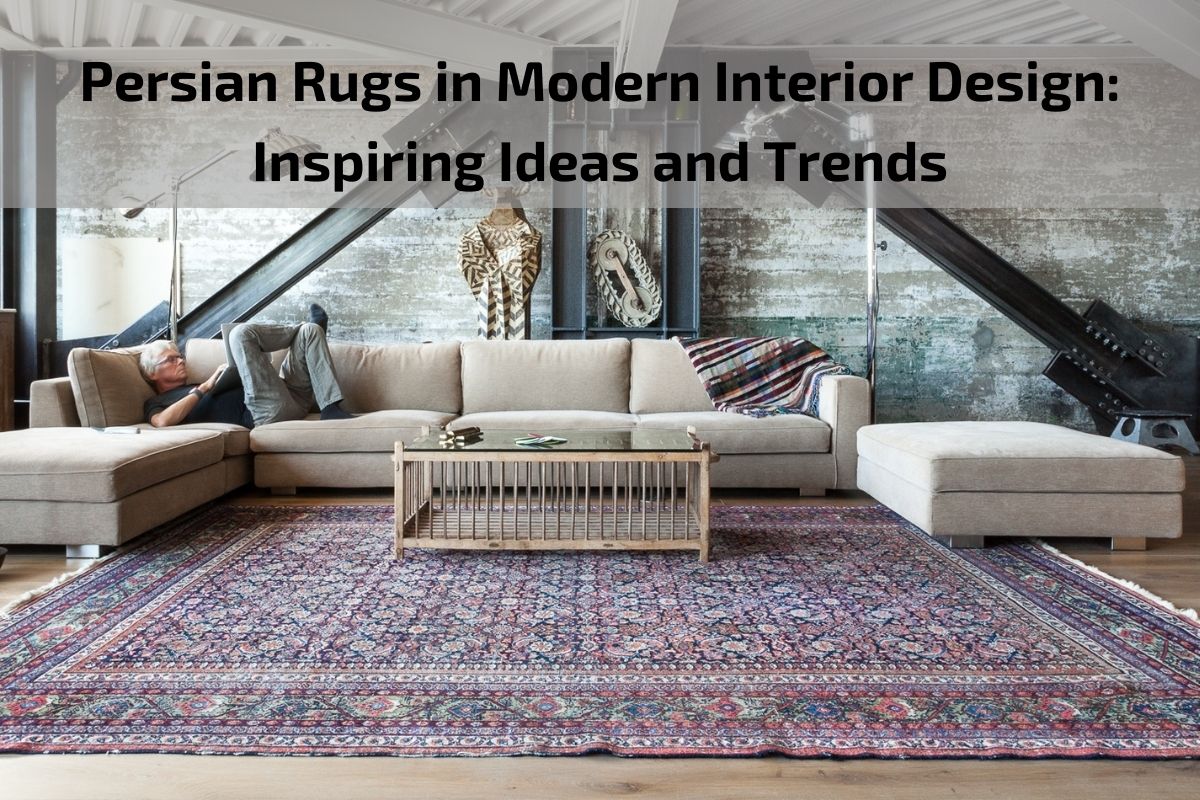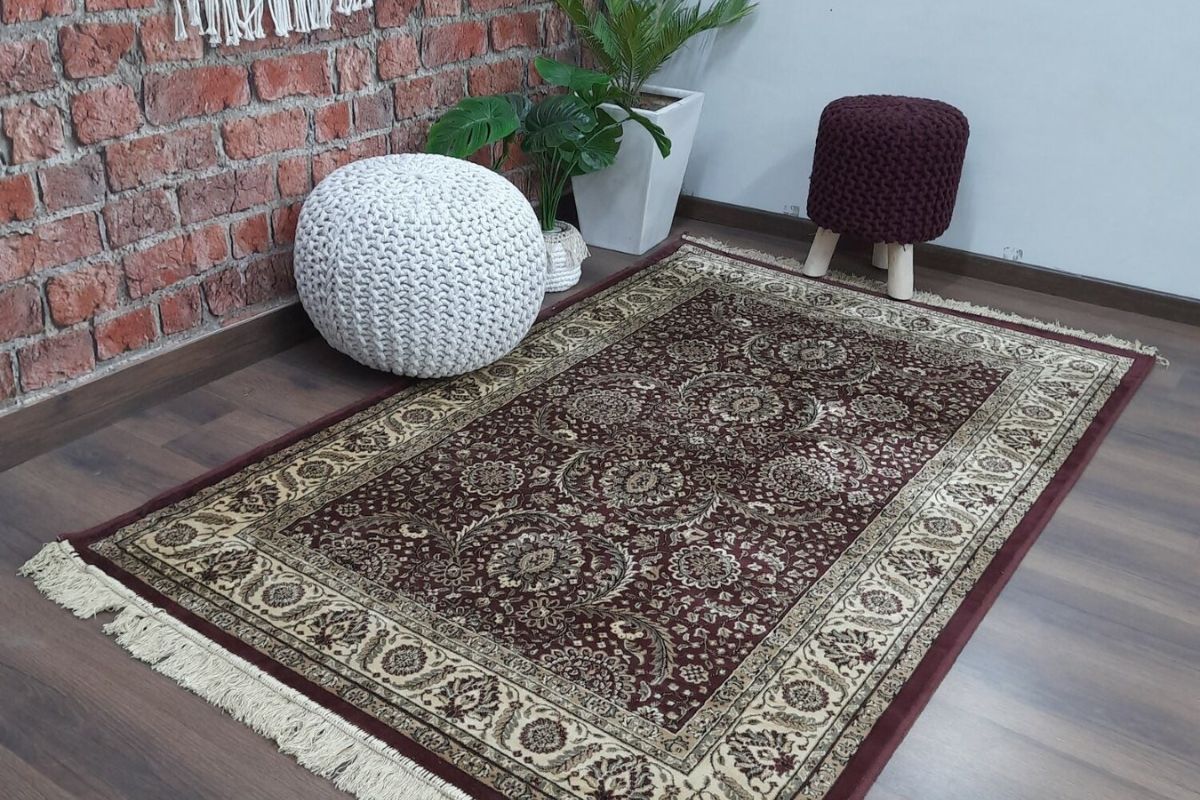
In the world of interior design, Persian rugs have transcended time and trends to become cherished elements that add depth, character, and elegance to modern living spaces. With their intricate patterns, rich colors, and exquisite craftsmanship, Persian rugs have evolved from traditional floor coverings to statement pieces that seamlessly blend heritage with contemporary design.
As we delve into the realm of modern interior design, the allure of Persian rugs continues to captivate homeowners, designers, and enthusiasts alike. From minimalist lofts to eclectic apartments, Persian rugs serve as focal points that infuse rooms with warmth, sophistication, and a sense of cultural heritage.
In this exploration of Persian rugs in modern interior design, we will uncover inspiring ideas and trends that showcase the versatility and timeless appeal of these treasured pieces. From innovative styling techniques to the integration of traditional motifs in contemporary spaces, Persian rugs continue to play a pivotal role in shaping the aesthetic and ambiance of modern homes.
Brief overview of Persian rugs
Persian rugs are renowned worldwide for their exquisite craftsmanship, intricate designs, and rich cultural heritage. Originating from Persia, which is now modern-day Iran, Persian rugs have a long and storied history that dates back thousands of years.
These hand-woven treasures are meticulously crafted by skilled artisans using traditional techniques passed down through generations. The art of Persian rug weaving involves intricate knotting methods, where each knot is tied by hand to create intricate patterns and motifs.
Persian rugs are made from various materials, including wool, silk, and cotton, each chosen for its unique qualities and textures. Wool is the most commonly used material and is prized for its durability, resilience, and ability to hold vibrant colors. Silk, on the other hand, adds a luxurious sheen and softness to the rugs, while cotton is often used for the foundation and warp threads.
What sets Persian rugs apart are their distinct designs, which vary based on the region where they are crafted. Each Persian rug reflects the cultural heritage, artistic traditions, and regional influences of its makers. From the intricate floral patterns of Isfahan rugs to the geometric motifs of Heriz rugs, Persian rugs showcase a diverse array of styles and aesthetics.
Persian rugs are not only cherished for their beauty but also for the stories they tell. Many rugs feature symbolic motifs and motifs that carry meanings rooted in Persian culture and mythology. These motifs may represent elements of nature, religious beliefs, or historical events, adding layers of depth and significance to the rug’s design.
Over the centuries, Persian rugs have become prized possessions and sought-after collectors’ items around the world. Their timeless elegance, exceptional craftsmanship, and enduring appeal make them cherished additions to any home décor, adding warmth, sophistication, and a touch of luxury to living spaces.
In summary, Persian rugs stand as enduring symbols of artistry, craftsmanship, and cultural heritage. With their intricate designs, vibrant colors, and rich history, Persian rugs continue to captivate and inspire admirers across the globe, embodying the timeless beauty of Persian craftsmanship.
Importance of Persian rugs in interior design and home décor
Persian rugs hold significant importance in interior design and home décor for several compelling reasons:
Timeless Elegance: Persian rugs are renowned for their timeless elegance and enduring beauty. Their intricate designs, rich colors, and intricate patterns add a touch of sophistication and luxury to any interior space, making them prized possessions for homeowners and designers alike.
Cultural Heritage: Persian rugs carry with them a rich cultural heritage that dates back thousands of years. Each rug is a testament to the artistic traditions, craftsmanship, and storytelling of the Persian people, reflecting the history, mythology, and cultural symbolism of the region.
Versatile Design Element: Persian rugs are incredibly versatile design elements that can complement a wide range of décor styles, from traditional to contemporary. Whether used as a focal point in a room or as an accent piece, Persian rugs have the ability to tie together disparate elements and anchor the overall design scheme.
Warmth and Comfort: Beyond their aesthetic appeal, Persian rugs provide warmth, comfort, and coziness to living spaces. The plush pile and soft textures of Persian rugs make them inviting places to sit, walk, and lounge, adding a layer of comfort to hardwood or tile floors.
Statement Piece: Persian rugs have the power to transform a room and make a bold statement. Whether through their intricate patterns, vibrant colors, or sheer size, Persian rugs can command attention and become the focal point of a space, setting the tone for the entire room’s decor.
Investment Value: Persian rugs are often considered valuable investments due to their craftsmanship, durability, and collectible nature. High-quality Persian rugs can appreciate in value over time, making them not only beautiful additions to your home but also sound financial investments.
Acoustic Benefits: Persian rugs help improve acoustics in interior spaces by absorbing sound and reducing echoes. This makes them ideal additions to rooms with hard surfaces such as wood or tile floors, helping to create a more pleasant and comfortable environment for occupants.
Personal Expression: Choosing a Persian rug for your home allows you to express your personal style, tastes, and preferences. With a wide variety of designs, colors, and sizes available, you can select a Persian rug that resonates with your aesthetic sensibilities and complements your existing décor.
Exploring the Different Types of Persian Rugs
Persian rugs are celebrated for their diversity, with various types showcasing unique designs, weaving techniques, and regional influences. Each type of Persian rug carries its own distinctive characteristics and holds a special place in the world of rug weaving. Let’s delve into the fascinating world of Persian rugs and explore some of the most prominent types:
Tabriz Rugs: Hailing from the city of Tabriz in northwest Iran, Tabriz rugs are renowned for their intricate designs and fine craftsmanship. These rugs often feature elaborate medallion motifs, floral patterns, and rich colors. Tabriz rugs are typically made with high-quality wool and silk, with knot densities ranging from fine to coarse.
Kashan Rugs: Originating from the city of Kashan, located in central Iran, Kashan rugs are esteemed for their elegant designs and fine materials. These rugs are characterized by intricate floral motifs, intricate borders, and a central medallion design. Kashan rugs are often woven with high-quality wool or silk, resulting in luxurious textures and vibrant colors.
Isfahan Rugs: Isfahan, an ancient city in central Iran, is renowned for producing some of the finest Persian rugs. Isfahan rugs are distinguished by their intricate floral and arabesque designs, intricate weaving techniques, and rich color palettes. These rugs often feature a central medallion surrounded by intricate floral patterns, all woven with precision and attention to detail.
Heriz Rugs: Hertz rugs originate from the Heirs region in northwest Iran and are known for their bold geometric designs and earthy color palettes. These rugs feature large, stylized medallions surrounded by geometric motifs and angular patterns. Hertz rugs are prized for their durability and rustic charm, making them popular choices for high-traffic areas.
Qom Rugs: Qom, a city in central Iran, is renowned for producing some of the most luxurious Persian rugs in the world. Qom rugs are characterized by their intricate designs, fine knotting, and exquisite materials. These rugs often feature intricate floral patterns, arabesques, and medallions, woven with silk threads on a cotton or silk foundation.
Nain Rugs: Nain rugs, originating from the city of Nain in central Iran, are prized for their delicate designs and fine craftsmanship. These rugs are known for their intricate floral motifs, intricate borders, and soft color palettes. Nain rugs are typically made with high-quality wool and silk, resulting in luxurious textures and a lustrous sheen.
Baluch Rugs: Baluch rugs are woven by the Baluch tribes of eastern Iran and western Afghanistan. These rugs are characterized by their tribal designs, geometric patterns, and rich earthy tones. Baluch rugs often feature geometric medallions, stylized animals, and intricate border motifs, reflecting the nomadic traditions and cultural heritage of the Baluch people.
Benefits of Persian Rugs
Timeless Elegance: Persian rugs are revered for their timeless beauty and exquisite craftsmanship. Their intricate designs, rich colors, and intricate patterns add a touch of sophistication and luxury to any interior space, making them prized possessions for homeowners and designers alike.
Cultural Heritage: Persian rugs carry with them a rich cultural heritage that spans centuries. Each rug is a reflection of the artistic traditions, craftsmanship, and storytelling of the Persian people, embodying the history, mythology, and cultural symbolism of the region.
Versatile Décor Element: Persian rugs are incredibly versatile décor elements that can complement a wide range of styles, from traditional to contemporary. Whether used as a focal point in a room or as an accent piece, Persian rugs have the ability to tie together disparate elements and anchor the overall design scheme.
Warmth and Comfort: Beyond their aesthetic appeal, Persian rugs provide warmth, comfort, and coziness to living spaces. The plush pile and soft textures of Persian rugs make them inviting places to sit, walk, and lounge, adding a layer of comfort to hardwood or tile floors.
Statement Piece: Persian rugs have the power to transform a room and make a bold statement. Whether through their intricate patterns, vibrant colors, or sheer size, Persian rugs can command attention and become the focal point of a space, setting the tone for the entire room’s decor.
Investment Value: Persian rugs are often considered valuable investments due to their craftsmanship, durability, and collectible nature. High-quality Persian rugs can appreciate in value over time, making them not only beautiful additions to your home but also sound financial investments.
Acoustic Benefits: Persian rugs help improve acoustics in interior spaces by absorbing sound and reducing echoes. This makes them ideal additions to rooms with hard surfaces such as wood or tile floors, helping to create a more pleasant and comfortable environment for occupants.
Personal Expression: Choosing a Persian rug for your home allows you to express your personal style, tastes, and preferences. With a wide variety of designs, colors, and sizes available, you can select a Persian rug that resonates with your aesthetic sensibilities and complements your existing decor.
Maintaining and Caring for Persian Rugs
Persian rugs are exquisite works of art that require proper maintenance and care to preserve their beauty and longevity. Here are some essential tips for maintaining and caring for your Persian rugs:
Regular Vacuuming: Vacuum your Persian rug regularly to remove dust, dirt, and debris that can accumulate over time. Use a vacuum cleaner with a low suction setting or a handheld attachment to gently clean the rug’s surface. Be sure to vacuum both sides of the rug to remove dirt trapped deep within the fibers.
Rotate Your Rug: Rotate your Persian rug periodically to ensure even wear and fading. Rotating the rug every six months to a year helps distribute foot traffic and sunlight exposure evenly, preventing one area of the rug from wearing out faster than others.
Avoid Direct Sunlight: Persian rugs are susceptible to fading when exposed to direct sunlight for extended periods. To prevent fading and discoloration, avoid placing your rug in areas where it will be exposed to direct sunlight. Use window treatments such as curtains or blinds to filter sunlight and protect your rug from harmful UV rays.
Use Rug Pads: Place rug pads underneath your Persian rug to provide extra cushioning and prevent slipping. Rug pads also help protect the rug’s fibers and extend its lifespan by reducing friction between the rug and the floor. Choose a rug pad made of materials such as felt or rubber that won’t damage your flooring.
Spot Clean Spills Promptly: Attend to spills and stains on your Persian rug promptly to prevent them from setting and becoming permanent. Blot the affected area with a clean, dry cloth or paper towel to absorb excess liquid. Avoid rubbing or scrubbing the stain, as this can push it deeper into the fibers. Use a mild detergent solution and gently blot the stain until it lifts.
Professional Cleaning: Schedule professional cleaning for your Persian rug at least once a year to remove embedded dirt, stains, and odors. Professional rug cleaners have the expertise and equipment to clean your rug safely and effectively without causing damage to the fibers. Choose a reputable rug cleaning company experienced in handling Persian rugs.
Proper Storage: If you need to store your Persian rug for an extended period, roll it up carefully with the pile facing inward to protect it from dust and damage. Avoid folding or creasing the rug, as this can weaken the fibers and cause permanent damage. Store the rug in a clean, dry area away from direct sunlight and moisture.
Conclusion
In conclusion, Persian rugs stand as timeless symbols of artistry, craftsmanship, and cultural heritage. With their intricate designs, vibrant colors, and rich history, Persian rugs add a touch of elegance and sophistication to any living space.







